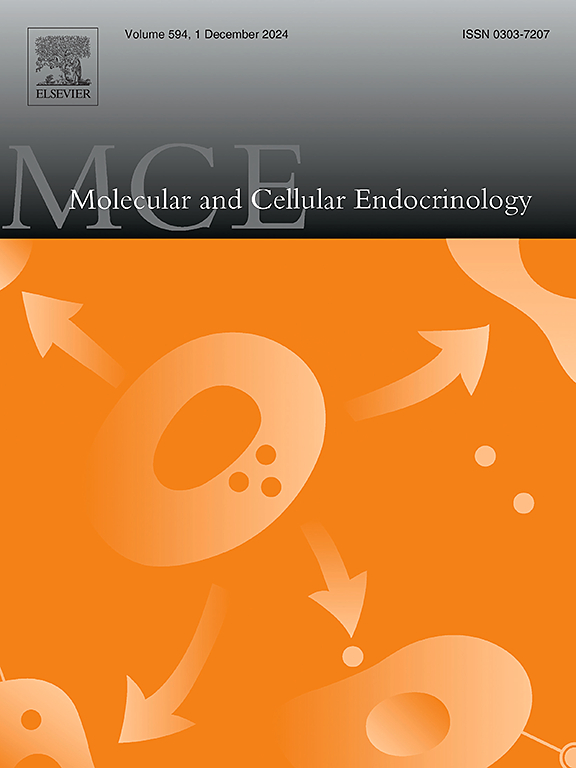GSTA2 overexpression alleviates bis (2-ethylhexyl) phthalate (DEHP)-induced male reproductive disorders by inhibiting oxidative stress-mediated cell apoptosis via the activated PI3K/AKT signaling pathway
IF 3.8
3区 医学
Q2 CELL BIOLOGY
引用次数: 0
Abstract
Male reproductive disorders are responsible for approximately 50% of infertility cases. Bis (2-ethylhexyl) phthalate (DEHP) is a common environmental pollutant known for its reproductive toxicity. Oxidative stress is a key mechanism in response to DEHP exposure. Glutathione S-transferase A2 (GSTA2), a member of the glutathione S-transferase family, has the capacity to detoxify environmental toxins. However, its role in regulating DEHP-induced male reproductive disorders remains unexplored. Next, male mice aged 3 weeks were orally administered with DEHP (500 mg/kg/day) for 14 days to induce male reproductive disorders. We observed a decrease in the GSTA2 expression in the testicular tissues of DEHP-treated mice. To investigate the role of GSTA2 in DEHP exposure, lentiviral vectors carrying GSTA2 sequences (1 × 107 TU/mL, 20 μL) were given to mice on the first day of DEHP treatment. GSTA2 overexpression was found to alleviate testicular damage induced by DEHP, as well as to inhibit oxidative stress and subsequent cell apoptosis. In addition, the PI3K/AKT signaling pathway, which is associated with oxidative stress and DEHP exposure, was activated in DEHP-exposed mice following GSTA2 overexpression. Subsequently, mouse spermatocyte GC-2spd cells with DEHP treatment were used to mimic male reproductive disorders in vitro. Consistently, the GSTA2 expression was decreased in GC-2spd cells with DEHP treatment. GSTA2 overexpression inhibited oxidative stress and cell apoptosis in DEHP-treated GC-2spd cells by activating the PI3K/AKT signaling pathway. Moreover, we discovered that GSTA2 overexpression significantly altered the metabolic profiles of DEHP-treated GC-2spd cells. Collectively, our results suggest that GSTA2 overexpression alleviates DEHP-induced male reproductive disorders by suppressing oxidative stress-mediated cell apoptosis via the PI3K/AKT signaling pathway, providing a novel insight into mitigating reproductive toxicity caused by DEHP exposure.

GSTA2过表达通过激活PI3K/AKT信号通路抑制氧化应激介导的细胞凋亡,减轻邻苯二甲酸二酯(2-乙基己基)(DEHP)诱导的男性生殖障碍。
男性生殖障碍导致大约50%的不孕症病例。邻苯二甲酸二(2-乙基己基)酯(DEHP)是一种常见的环境污染物,具有生殖毒性。氧化应激是DEHP暴露反应的关键机制。谷胱甘肽s -转移酶A2 (GSTA2)是谷胱甘肽s -转移酶家族的一员,具有解毒环境毒素的能力。然而,其在调节dehp诱导的男性生殖障碍中的作用仍未被探索。然后,给3周龄雄性小鼠口服DEHP (500 mg/kg/天),连续14天诱导雄性生殖障碍。我们观察到dehp处理小鼠睾丸组织中GSTA2表达降低。为了研究GSTA2在DEHP暴露中的作用,在DEHP治疗的第一天,将携带GSTA2序列(1 × 107 TU/mL, 20 μL)的慢病毒载体给予小鼠。GSTA2过表达可减轻DEHP引起的睾丸损伤,并抑制氧化应激和随后的细胞凋亡。此外,GSTA2过表达后,与氧化应激和DEHP暴露相关的PI3K/AKT信号通路在DEHP暴露小鼠中被激活。随后,使用DEHP处理的小鼠精细胞GC-2spd细胞在体外模拟男性生殖障碍。DEHP处理后,GC-2spd细胞中GSTA2表达下降。GSTA2过表达通过激活PI3K/AKT信号通路抑制dehp处理的GC-2spd细胞的氧化应激和细胞凋亡。此外,我们发现GSTA2过表达显著改变了dehp处理的GC-2spd细胞的代谢谱。总之,我们的研究结果表明,GSTA2过表达通过PI3K/AKT信号通路抑制氧化应激介导的细胞凋亡,从而减轻DEHP诱导的男性生殖障碍,为减轻DEHP暴露引起的生殖毒性提供了新的见解。
本文章由计算机程序翻译,如有差异,请以英文原文为准。
求助全文
约1分钟内获得全文
求助全文
来源期刊

Molecular and Cellular Endocrinology
医学-内分泌学与代谢
CiteScore
9.00
自引率
2.40%
发文量
174
审稿时长
42 days
期刊介绍:
Molecular and Cellular Endocrinology was established in 1974 to meet the demand for integrated publication on all aspects related to the genetic and biochemical effects, synthesis and secretions of extracellular signals (hormones, neurotransmitters, etc.) and to the understanding of cellular regulatory mechanisms involved in hormonal control.
文献相关原料
公司名称
产品信息
索莱宝
hematoxylin
索莱宝
SYBR GREEN
索莱宝
hematoxylin
索莱宝
hematoxylin
索莱宝
SYBR GREEN
阿拉丁
xylene solution
阿拉丁
DAPI
阿拉丁
xylene solution
阿拉丁
DAPI
阿拉丁
xylene solution
阿拉丁
DAPI
阿拉丁
xylene solution
阿拉丁
DAPI
 求助内容:
求助内容: 应助结果提醒方式:
应助结果提醒方式:


